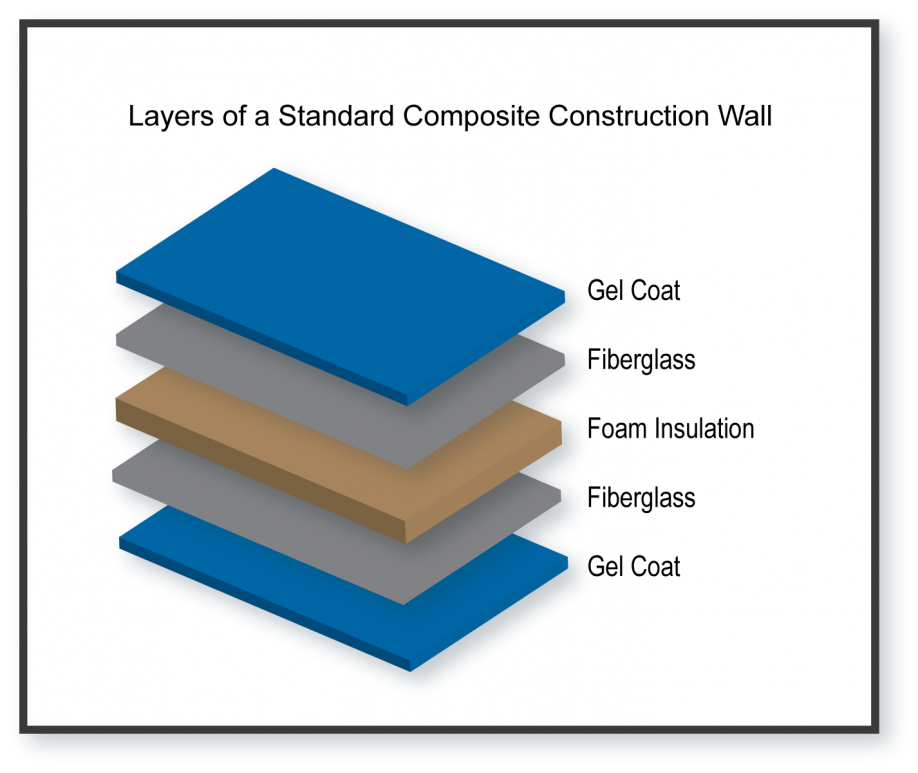Advanced Composites for Resilient and Light-weight Construction
Advanced Composites for Resilient and Light-weight Construction
Blog Article
Unlocking the Ecological Advantages of Recycled Composites in Building and Design
In the realm of construction and style, the application of recycled compounds holds significant promise for boosting sustainability practices and minimizing environmental impact (composites). By incorporating these innovative materials, there is a possible to resolve crucial issues such as waste minimization, energy conservation, and a reduction in carbon footprint. The change towards a much more lasting future in these sectors depends upon unlocking the full capacity of recycled composites. This conversation will explore the complex benefits and difficulties related to integrating recycled composites into building and style, providing a glimpse right into the transformative opportunities that lie ahead.

Ecological Influence Reduction
The reduction of ecological effect via the use of recycled compounds in construction and style plays an important role in lasting practices. By including recycled composites into structure materials, the construction sector can considerably decrease its carbon impact and add to a much more green future. These lasting products, made from repurposed plastics, wood fibers, or other recycled components, use a practical alternative to conventional building materials without endangering on top quality or durability.
Recycled composites aid draw away waste from garbage dumps and minimize the demand for extracting raw products, hence saving natural deposits. Additionally, the manufacturing procedure of these composites commonly eats much less energy and sends out fewer greenhouse gases compared to creating virgin products (composites). This shift in the direction of utilizing recycled composites not only decreases ecological injury however also promotes a circular economy by encouraging the reuse of materials that would certainly or else be thrown out
Waste Reduction
With an emphasis on minimizing waste in building and design, the assimilation of recycled compounds supplies a lasting remedy to reduce ecological effect. Waste reduction is a crucial facet of sustainable practices, and using recycled compounds presents a chance to accomplish this objective properly. By utilizing materials that have actually already offered their first objective, such as recycled plastics or redeemed wood fibers, the construction and style sectors can dramatically reduce the amount of waste created and sent out to landfills.
Recycled composites have the potential to divert substantial quantities of waste from standard disposal approaches, contributing to a much more circular economy where resources are used effectively. Furthermore, the production process of recycled composites commonly eats much less power and produces fewer discharges compared to virgin products, even more minimizing the ecological footprint of construction and design projects.
Implementing waste reduction techniques with the incorporation of recycled composites not just aids in preserving natural deposits yet likewise promotes a more lasting method to structure and creating for a greener future.
Power Conservation
Including recycled composites not just reduces waste in construction and style yet additionally plays a vital role in improving energy preservation methods within the market. Making use of recycled composites in why not find out more construction can dramatically add to energy conservation via numerous ways. The manufacturing of virgin materials typically needs significant energy inputs, whereas utilizing recycled compounds takes in less energy, thereby decreasing total energy consumption. Additionally, integrating recycled composites can contribute to far better insulation residential properties in buildings, minimizing the demand for too much home heating or air conditioning, and consequently lowering power use for climate control. Moreover, the lightweight nature of numerous recycled compounds can lead to lighter structures, requiring less energy for transport and installation. By promoting making use of recycled compounds in building and layout, the sector can make substantial strides in the direction of achieving energy effectiveness and reducing its carbon impact, ultimately adding to an extra lasting constructed atmosphere.
Carbon Footprint Decrease
Enhancing sustainability practices with the application of recycled compounds in building and construction and layout substantially lowers the carbon footprint of the industry. By including recycled products into the manufacturing of composites, the need for virgin resources reduces, resulting in lower energy usage and greenhouse gas exhausts connected with typical production processes. This decrease in carbon impact is vital in combating environment change and promoting an extra eco pleasant strategy to building and design.
In addition, using recycled composites also assists in drawing away waste from land fills, thus reducing the environmental effect of disposal and promoting a round economic situation. The carbon footprint reduction accomplished through the fostering of recycled composites aligns with the worldwide press towards lasting methods and the reduction of commercial discharges. It showcases a dedication to liable resource monitoring and a shift in the direction of greener choices in the building and layout fields. Eventually, by focusing on the integration of recycled compounds, the sector can make substantial strides in lowering its carbon footprint and adding to a much more lasting future.
Lasting Future
The integration of recycled compounds in building and construction and design not only addresses immediate ecological issues however also lays a you could try these out solid foundation for a lasting future in the market. By including recycled composites into structure materials and items, the construction and layout sectors can dramatically lower their dependence on virgin sources, leading to an extra round economic situation. This change towards sustainability is crucial for reducing the environmental impact of typical building and construction techniques, which commonly result in high levels of waste generation and source deficiency.

Verdict
In conclusion, recycled composites supply substantial ecological benefits in construction and design by decreasing ecological impact, lessening waste, saving energy, reducing carbon footprint, and advertising a sustainable future. Welcoming using recycled compounds can add to a much more environmentally-friendly strategy to structure and layout, ultimately leading to an extra lasting and greener future for all.
The decrease of environmental effect with the usage of recycled composites in construction and style plays a vital function in lasting practices.With a focus on decreasing waste in construction and layout, the assimilation of recycled compounds uses a lasting remedy to minimize environmental influence. By promoting the use of recycled compounds in construction and layout, the sector can make significant strides towards attaining power efficiency and minimizing its carbon impact, inevitably adding to an extra lasting built environment.

Report this page